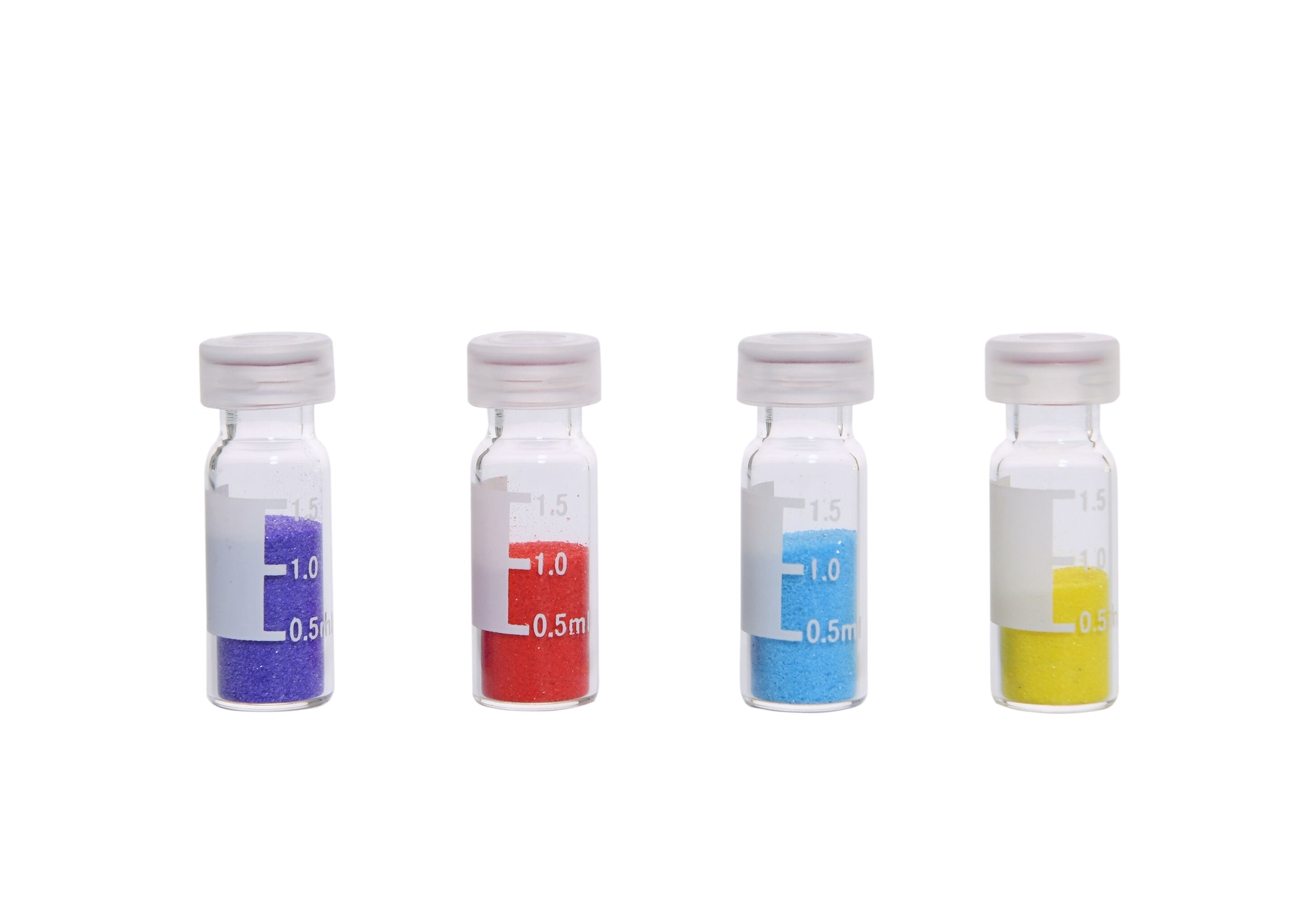Understanding HPLC Vial Types and Their Role in Lab Accuracy
Why HPLC Vial Selection Impacts Chromatographic Results
Getting the correct HPLC vial choice right matters a lot when trying to get consistent chromatography readings. We've all seen how switching out one vial type for another can throw off concentration measurements quite dramatically. Some studies show that picking the wrong vial might actually skew results by as much as 20%, which explains why knowing the differences between various vial materials and designs becomes so important for good analytical work. The actual vial itself influences sample behavior in several ways including how compounds stick to surfaces, how they're retained during analysis, and even introduces possible contaminants if not chosen properly. Lab technicians need to pay close attention to these details because getting this part wrong will compromise the whole experiment no matter how carefully everything else is done.
Using appropriate HPLC vials is not only vital for maintaining the integrity of the data but also instrumental in preventing sample contamination. While the choice may seem like a minor detail, it is indeed a cornerstone of analytical precision when conducting chromatography.
The Relationship Between Vial Design and Sample Integrity
The way vials are designed matters a lot for keeping samples intact during lab testing. Things like how the neck is shaped, whether the seal holds properly, and if the materials won't react with what's inside all affect how well the sample stays stable. When vial design falls short, samples often degrade or get contaminated somehow. That's why many labs push for standard designs across their operations so results stay consistent run after run. Good design actually stops unwanted chemical reactions between the sample and whatever plastic or glass makes up the vial walls. Without this protection, even small changes in composition could throw off important test results completely.
Studies have demonstrated that vial design significantly influences the success or failure of sample analysis. The application of carefully designed vials in laboratory work assures the credibility and precision of scientific results, reinforcing the necessity for integrating quality design standards in vial manufacturing and usage.
Comparing Common HPLC Vial Materials: Glass vs. Polymer Options
Borosilicate Glass Vials: Transparency and Chemical Inertness
Borosilicate glass vials are known for their outstanding ability to resist chemicals and last through tough conditions, so they're often selected for various HPLC applications across laboratories. What makes these containers special is their low thermal expansion rate. This means they don't crack or break easily when temperatures go up and down during experiments, which keeps samples safe throughout testing procedures. Another benefit worth mentioning is how clear borosilicate glass remains. Lab technicians can actually see what's inside without opening the container, spotting particles floating around or noticing color shifts that might indicate something's wrong with the sample being tested. This visibility plays a big role in getting accurate results from analytical work.
Amber Glass Vials: UV Protection for Light-Sensitive Samples
Amber glass vials provide good protection against UV light, which matters a lot when dealing with samples that break down easily when exposed to regular lighting conditions. These special containers block out those damaging wavelengths that would otherwise ruin sensitive materials over time. The result? Chemical structures stay intact longer, keeping their effectiveness for things like certain medications and other organic chemicals we work with in labs. Scientists who store and analyze samples in amber glass tend to see better results because their specimens last much longer without degrading. This makes all the difference in experiments where sample quality directly affects what conclusions researchers can draw from their work.
Polymer Vials: When to Choose PEEK or Polypropylene
Polymer vials made from materials like PEEK or polypropylene offer several key benefits that make them stand out. They're lighter than glass alternatives and can withstand all sorts of solvents without breaking down. Labs often turn to these plastic containers when sample weight matters a lot, or when certain chemicals just don't play nice with glass surfaces. The right choice really depends on what's being stored and how it will be handled later. What's interesting too is that many polymer vials can actually be recycled, which helps labs cut down on waste generation. This becomes especially important as research facilities across the country try to meet stricter environmental standards while still maintaining their operational efficiency.
In summary, selecting the right HPLC vial material is crucial for maintaining sample integrity and achieving precise analytical results. Each materialâwhether borosilicate glass, amber glass, or polymers like PEEKâoffers distinct benefits that cater to specific laboratory needs and contribute to overall efficiency and accuracy in HPLC procedures.
Critical Features to Evaluate in HPLC Vial Selection
Septum Compatibility: Ensuring Proper Vial Sealing
Getting the right seal on lab vials through compatible septums matters a lot for keeping samples intact during HPLC testing. These rubber-like covers stop stuff from getting into the sample and prevent valuable compounds from escaping out. Materials such as PTFE mixed with silicone work well because they don't react much with what's inside the vial, which keeps everything stable for better test results according to Maxi Scientific research last year. But problems happen when the wrong material is used for the septum. Sometimes this leads to broken seals or messed up data. That's why it pays off to spend time picking the right material based on what kind of substances will be stored there. Lab technicians know this from experience after seeing bad outcomes from mismatched materials.
Neck Design Variations: Conical vs. Flat Opening
When selecting between conical and flat neck designs for HPLC vials, lab technicians need to consider how each affects daily work. Conical designs drain better, which means they're great for getting every last bit out of small samples without wasting precious material. Labs working with limited quantities really appreciate this feature. On the other hand, many researchers opt for flat neck openings when running high volume tests because needles slide right in and out quickly, saving valuable time during repetitive procedures. Making the right choice matters quite a lot since it impacts everything from sample prep to actual testing in chromatography applications. Knowing the difference between these options helps labs run smoother day to day while keeping costs down and results consistent.
Matching Vial Capacity to Sample Volume Requirements
Micro-Volume Vials vs. Standard 2mL Options
Choosing the right vials for HPLC work means getting the size right for what the lab needs. Micro volume vials hold samples usually below 100 microliters and help save solvents while making better use of precious samples. Labs working with tiny amounts find these especially useful because they let researchers pack more into smaller spaces, which actually helps spot those faint signals during testing. Standard 2mL vials tell another story altogether. These babies handle everything from small to medium sized samples across different tests. Most chemistry labs keep a stock of them since they work well for so many situations. Knowing when to reach for each type makes all the difference in developing reliable methods without breaking the bank, something every busy lab manager appreciates when dealing with tight budgets and constant demands for faster results.
Maximizing Recovery Rates in Low-Volume Applications
Getting the most out of recovery rates matters a lot, particularly when dealing with small volumes where every drop counts. Choosing vials that don't absorb much of the sample material makes a big difference in how much we actually recover from our tests. This means less waste of precious samples during analysis. The right vial design plus special surface treatments really help when working with tiny amounts of material, making the whole process work better. Some studies show that picking the proper size vials can boost yields as much as 30 percent. That kind of improvement shows just how important getting the right vial size really is for accurate testing. Labs that focus on these details tend to get more reliable results overall, which helps make their chromatography work successful in the long run.
Chemical Compatibility Considerations for HPLC Vials
Avoiding Solvent Interactions with Vial Materials
Chemical compatibility between vial materials and solvents matters a lot for keeping samples pure and getting accurate results. Labs often work with solvents like methanol, acetonitrile, and water, so picking vials that won't react or release substances into the sample becomes really important. Getting this right helps researchers select appropriate materials without worrying about interactions that might mess up their samples. We've seen cases where mismatched vials and solvents led to wrong test results or dangerous situations in the lab. That's why matching vials to solvent needs isn't just good practice but actually saves time and money in the long run for most laboratory settings.
High-Temperature Stability Demands
For certain lab tests, HPLC vials need to withstand pretty extreme temps without warping or changing chemically, so picking the right materials really matters. The good ones are made from special plastics like PTFE that hold their shape even when things get hot, something absolutely necessary for those high temp applications. Looking at what researchers have found, keeping these vials thermally stable helps validate methods properly and gets consistent results no matter where the experiment takes place. When scientists go for vials that can handle heat, they're not just making life easier in the lab but actually improving how trustworthy their findings turn out to be, which ultimately keeps the whole research process on solid ground.
Validation and Quality Assurance for HPLC Vial Performance
Certification Standards: USP/EP Compliance
Standards like USP and EP play a key role in making sure HPLC vials pass strict quality checks. Labs working in pharmaceuticals and biotech really need this because they want vials that won't break down or mess with their samples when handling sensitive materials. Good manufacturers know purity matters for accurate results, so they supply proper paperwork showing they follow these standards. When researchers see this certification on their vials, they get peace of mind knowing their equipment meets quality requirements. This helps keep samples intact during all stages of testing, from preparation to final analysis.
Batch Consistency Testing for Critical Applications
Testing for batch consistency remains essential when maintaining quality standards across different production runs of HPLC vials. Getting uniform results from one batch to the next helps prevent those frustrating situations where test outcomes start looking suspiciously off track. When labs run their regular quality assessments, they're basically trying to eliminate random variations that might creep into vial performance over time. These little inconsistencies can really pile up costs down the line through extra calibrations and repeat tests nobody wants to do twice. Research from several manufacturers indicates that sticking to solid batch testing procedures pays off in multiple ways. Labs stay compliant with regulations while running smoother operations day to day. For research work requiring rock solid repeatability, like pharmaceutical development or environmental analysis, these quality controls aren't just nice to have they're absolutely necessary for producing trustworthy data week after week.
FAQ Section
What are HPLC vials?
HPLC vials are small containers used to hold samples that are analyzed using high-performance liquid chromatography (HPLC).
Why is vial selection important in HPLC?
Choosing the correct vial can significantly impact chromatographic results due to factors like retention, adsorption, and contamination.
What materials are commonly used for HPLC vials?
Common materials include borosilicate glass for transparency and chemical inertness, amber glass for UV protection, and polymers like PEEK and polypropylene.
What does USP/EP compliance mean for HPLC vials?
USP/EP compliance ensures the vials meet stringent quality protocols and are safe for handling substances in laboratory settings.
Table of Contents
- Understanding HPLC Vial Types and Their Role in Lab Accuracy
- Comparing Common HPLC Vial Materials: Glass vs. Polymer Options
- Critical Features to Evaluate in HPLC Vial Selection
- Matching Vial Capacity to Sample Volume Requirements
- Chemical Compatibility Considerations for HPLC Vials
- Validation and Quality Assurance for HPLC Vial Performance
- FAQ Section




